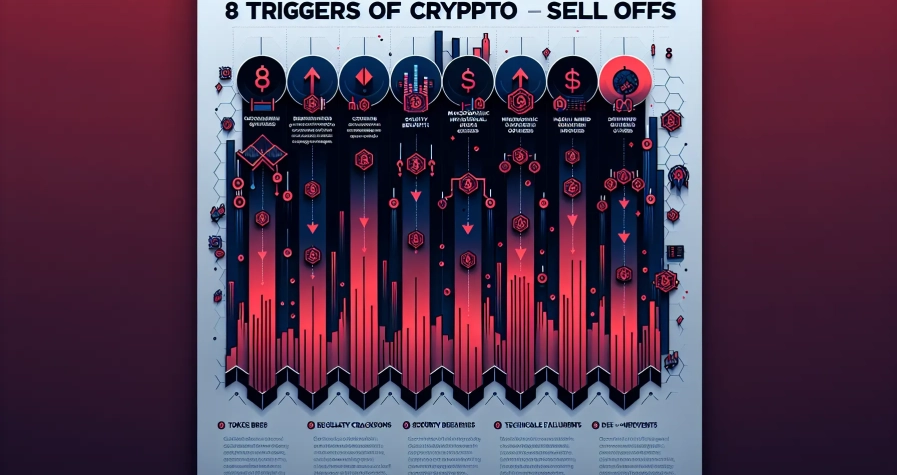Your cryptocurrency investments deserve the highest level of protection and Binance offers robust security features to safeguard your digital assets. Whether you’re a beginner trader or an experienced investor understanding how to properly configure these security settings is crucial for protecting your funds from potential threats.
Enabling the right security measures on your Binance account isn’t just recommended – it’s essential. From two-factor authentication to withdrawal whitelist features these security tools create multiple layers of defence against unauthorised access and potential cyber attacks.
In this comprehensive guide you’ll discover step-by-step instructions for activating every important security setting available on the Binance platform. We’ll walk you through each feature explain why it matters and show you exactly how to implement these protections to keep your cryptocurrency portfolio secure.
Understanding Binance Security Features
Binance implements multiple security layers to protect your cryptocurrency holdings from unauthorised access and malicious attacks. These security features work collectively to create a robust defence system that safeguards your digital assets across different access points and transaction types.
Multi-Factor Authentication Options
Two-Factor Authentication (2FA) serves as your primary security layer beyond your standard login credentials. Binance supports three 2FA methods: SMS authentication sends verification codes to your registered mobile number, Google Authenticator generates time-based codes through the mobile app, and hardware security keys provide physical authentication tokens.
Email Verification activates automatically for account activities including logins from new devices, withdrawal requests, and security setting modifications. This feature alerts you to account access attempts and requires confirmation for sensitive operations.
Account Protection Mechanisms
Anti-Phishing Code creates a unique identifier that appears in all legitimate Binance emails. You customise this code to distinguish authentic communications from fraudulent phishing attempts targeting your account credentials.
Device Management tracks all authorised devices accessing your Binance account. The system displays device information including IP addresses, locations, and access timestamps whilst allowing you to revoke access from suspicious or unused devices.
Login Activity Monitoring records comprehensive access logs showing successful logins, failed attempts, and geographical locations. These logs help you identify unauthorised access attempts and monitor account security status.
Withdrawal Security Controls
Address Whitelisting restricts cryptocurrency withdrawals to pre-approved wallet addresses only. This feature prevents unauthorised withdrawals even if attackers gain account access, as they cannot add new withdrawal destinations without additional verification.
Withdrawal Limits establish daily and monthly transaction thresholds based on your account verification level. Higher verification tiers unlock increased withdrawal limits whilst maintaining security protocols.
Withdrawal Delay implements mandatory waiting periods for large transactions or new withdrawal addresses. This cooling-off period provides additional time to detect and prevent fraudulent withdrawal attempts.
Advanced Security Features
Account Activity Alerts send real-time notifications for critical account events including password changes, security setting modifications, and large transactions. These alerts enable immediate response to suspicious activities.
IP Access Restrictions limit account access to specific IP addresses or geographical regions. This feature blocks access attempts from unauthorised locations whilst maintaining seamless access from your regular devices and networks.
Setting Up Two-Factor Authentication (2FA)
Two-factor authentication provides essential account protection by requiring a second verification step beyond your password. You can choose between Google Authenticator or SMS Authentication to secure your Binance account from unauthorised access.
Google Authenticator Setup
Google Authenticator creates time-based codes that enhance your account security with offline verification capabilities.
- Navigate to security settings by clicking your account icon in the top right corner and selecting Security from the dropdown menu
- Click Enable next to Google Authenticator in the Two-Factor Authentication section
- Download Google Authenticator app from your device’s official app store and install it on your mobile device
- Scan the QR code displayed on Binance using the app, or manually enter the 16-digit setup key provided
- Open Google Authenticator app, tap the + button, and complete the setup process
- Enter the 6-digit verification code generated by the app into Binance to activate 2FA
- Verify activation by confirming the code matches what appears in your authenticator app
Alternative authenticator apps supporting 6-digit TOTP codes (such as Authy or Microsoft Authenticator) work with Binance’s system, though you must still select Google Authenticator in the platform interface.
SMS Authentication Setup
SMS Authentication delivers verification codes directly to your mobile phone for convenient account access control.
- Access the security settings through your account menu and locate the Two-Factor Authentication section
- Click Enable next to SMS Authentication option
- Enter your mobile number in the designated field, ensuring the country code is correct
- Receive the activation code via SMS text message from Binance
- Input the verification code on the Binance platform to confirm your mobile number
- Complete the setup by following any additional prompts to activate SMS-based 2FA
| Authentication Method | Setup Time | Security Level | Offline Access |
|---|---|---|---|
| Google Authenticator | 5 minutes | High | Yes |
| SMS Authentication | 3 minutes | Medium | No |
Both authentication methods require verification during login attempts and withdrawal processes, significantly reducing unauthorised access risks to your cryptocurrency holdings.
Configuring Account Security Settings
Configuring account security settings on Binance involves accessing multiple security features through your profile dashboard. These settings create comprehensive protection layers that work together to secure your cryptocurrency holdings.
Password Security Requirements
Create robust passwords that combine uppercase letters, lowercase letters, numbers and special characters to maximise account protection. Avoid predictable information such as names, birthdates or commonly used phrases that hackers can easily guess through social engineering or brute force attacks.
Use unique passwords exclusively for your Binance account rather than recycling credentials from other platforms. This practice prevents credential stuffing attacks where compromised passwords from one service expose multiple accounts across different platforms.
Change your password regularly to maintain optimal security standards and immediately update it if you suspect any unauthorised access attempts. Store passwords securely using reputable password managers rather than saving them in browsers or writing them down in accessible locations.
Email Verification Setup
Email verification provides an additional authentication layer during critical account activities such as withdrawals, security changes and login attempts from new devices. Binance sends one-time verification codes to your registered email address whenever these sensitive actions occur.
Configure email verification by ensuring your email address remains current and accessible at all times. Complete the verification process by entering the six-digit code accurately within the specified time limit when prompted during security setup or account modifications.
Verify legitimate Binance emails by checking for your custom Anti-Phishing Code, which appears in all authentic communications from the platform. This unique identifier helps distinguish genuine correspondence from phishing attempts that might try to steal your credentials or compromise your account security.
Monitor your email regularly for unexpected verification requests, as these could indicate unauthorised access attempts on your account. Contact Binance support immediately if you receive verification emails for activities you didn’t initiate.
Advanced Security Measures
Advanced security measures provide comprehensive protection beyond basic authentication methods. These features create multiple defence layers that significantly reduce vulnerability to sophisticated cyber attacks.
Anti-Phishing Code Configuration
Anti-Phishing Code configuration adds a personalised identifier to all legitimate Binance communications. You can set a unique code or phrase that appears exclusively in official emails and SMS messages from Binance.
Setting Up Your Anti-Phishing Code:
- Navigate to Security Settings and select Anti-Phishing Code
- Create a memorable phrase such as “MyCryptoOnly” or “SecureBinance2024”
- Access the feature through Security → Anti-Phishing Code → Create
- Enter your chosen code and submit the form
- Complete verification using 2FA or your registered passkey
This personalised code helps you instantly identify genuine Binance correspondence whilst filtering out phishing attempts. Fraudulent emails cannot replicate your specific anti-phishing code, making suspicious communications immediately recognisable.
Device Management and Whitelisting
Device management and whitelisting controls provide granular access control over your Binance account. These features monitor login devices and restrict withdrawals to pre-approved addresses.
Device Management Controls:
| Feature | Function | Security Benefit |
|---|---|---|
| Login Device Tracking | Records all access devices | Identifies unauthorised access attempts |
| Device Verification | Requires email/2FA confirmation | Prevents unknown device logins |
| Device Removal | Instantly blocks suspicious devices | Eliminates ongoing security threats |
Withdrawal Address Whitelisting:
Withdrawal whitelisting restricts cryptocurrency transfers exclusively to pre-approved wallet addresses. You must manually add each destination address through the security dashboard before conducting any withdrawals.
This feature prevents unauthorised asset transfers even if attackers compromise your login credentials. Enabled whitelisting creates a 24-hour delay for new addresses, providing additional time to detect and respond to suspicious activity.
Monitor your approved devices regularly through the security dashboard and remove any unrecognised entries immediately. Each new device login triggers verification notifications, allowing you to block unauthorised access attempts before they succeed.
Withdrawal Security Settings
Withdrawal security settings form the foundation of protecting your cryptocurrency assets from unauthorised transfers on Binance. These controls create essential barriers that prevent malicious actors from accessing and withdrawing your funds.
Address Whitelist Configuration
Address whitelist configuration restricts cryptocurrency withdrawals exclusively to pre-approved wallet addresses that you’ve personally verified. This security measure prevents unauthorised fund transfers even if someone gains access to your account credentials.
Access the whitelist feature by navigating to Profile → Security → Address Management within your Binance dashboard. Click the “Withdrawal Whitelist” button and carefully review the instructions that appear on screen. Complete the activation process by confirming the action and providing your 2FA verification code to enable the whitelist functionality.
Add approved withdrawal addresses through Wallet → Withdraw → Address Book → Address Management once you’ve activated the whitelist feature. Each address requires verification before you can use it for withdrawals, typically involving email confirmation and 2FA authentication.
Benefits of address whitelisting include:
- Blocks withdrawals to unknown addresses
- Requires deliberate action to add new addresses
- Maintains protection even during account compromise
- Reduces phishing attack effectiveness
Withdrawal Password Setup
Withdrawal password setup creates an additional verification layer specifically for fund transfers beyond your standard login credentials. This distinct password functions independently from your account password and provides extra security during withdrawal requests.
Locate the withdrawal password option within your Security or Wallet settings section of your Binance account. Create a unique password that differs completely from your login credentials and avoid reusing passwords from other platforms or services.
Complete the setup process by enabling 2FA verification for all withdrawal password changes or resets. This requirement ensures that only authorised users can modify withdrawal security settings and prevents unauthorised password modifications.
Withdrawal password features provide:
- Independent verification for fund transfers
- Additional barrier against unauthorised withdrawals
- Enhanced security alongside whitelist controls
- Separate authentication from login credentials
Combining address whitelist configuration with withdrawal password setup creates multiple security layers that significantly reduce unauthorised access risks to your cryptocurrency holdings.
API Security Management
API security management forms a critical component of comprehensive Binance account protection, extending beyond basic authentication to secure programmatic access. These settings provide granular control over API functionality whilst maintaining robust protection against unauthorised system access.
Creating Secure API Keys
Creating secure API keys requires completing two-factor authentication before accessing the API Management section through your profile menu. Navigate to the API Management dashboard and create new keys with descriptive labels such as “Trading Bot” or “Portfolio Tracker” to identify their specific purposes.
Complete security verification through both email and phone authentication during the key creation process. Save both the API Key and Secret Key immediately upon generation, preferably storing them in a password manager since the Secret Key displays only once and cannot be retrieved later.
Configure API key permissions based on your specific requirements, selecting appropriate access levels for different functions. Assign “Read-Only” permissions for monitoring activities or “Enable Spot & Margin Trading” for active trading operations, customising permissions to restrict capabilities to essential functions only.
| Permission Type | Function | Security Level |
|---|---|---|
| Read-Only | Account monitoring | Low risk |
| Enable Spot Trading | Basic trading operations | Medium risk |
| Enable Margin Trading | Leveraged trading | Higher risk |
| Enable Futures Trading | Derivatives trading | Higher risk |
| Withdraw Permissions | Asset transfers | Highest risk |
Avoid enabling withdrawal permissions unless absolutely necessary, as this creates the highest security vulnerability for your cryptocurrency holdings.
IP Restriction Settings
IP restriction settings provide essential protection by limiting API key usage to specific trusted IP addresses through the API Management dashboard. Implement IP whitelisting to restrict access exclusively to recognised systems, blocking any requests from unapproved IP addresses automatically.
Configure your whitelist by adding specific IP addresses for systems that require API access, such as trading servers or monitoring applications. Update your IP whitelist regularly when changing networks or requiring access from additional locations to maintain continuous functionality.
Monitor your current IP restrictions through the API Management interface, reviewing active connections and removing outdated or unnecessary IP addresses. Regularly audit your whitelist to ensure only authorised systems maintain access to your API endpoints.
Review API key activity logs frequently to detect anomalous usage patterns or suspicious behaviour from unexpected IP addresses. Revoke compromised keys immediately upon discovering irregularities or unauthorised access attempts to prevent potential security breaches.
Monitoring and Managing Account Activity
Account activity monitoring provides real-time visibility into your Binance account actions and detects unauthorised access attempts before they compromise your cryptocurrency holdings. This security layer tracks login sessions, transaction patterns, and device usage across your account.
Login History and Session Management
Your login history reveals access patterns and helps identify suspicious account activity. Navigate to Profile → Security to access your login records, which display timestamps, IP addresses, and device information for each session.
Review these login entries regularly to spot unauthorised access attempts:
- Unfamiliar locations appearing in your login history
- Unknown devices accessing your account
- Unusual login times outside your typical usage patterns
- Multiple failed login attempts from different IP addresses
Active session management lets you terminate suspicious connections immediately. Click Log out all devices if you discover unauthorised access, forcing all sessions to disconnect and requiring fresh authentication.
Transaction Activity Alerts
Real-time transaction alerts notify you instantly when significant account activities occur, enabling rapid response to unauthorised actions. Configure these alerts through Profile → Security → Preferences to monitor critical account events.
Essential alert categories include:
- Login notifications for new device access
- Withdrawal confirmations for fund transfers
- Trading activity alerts for large transactions
- Security setting changes affecting your protection levels
- API key usage notifications for programmatic access
Email and SMS alert options ensure you receive notifications even when offline. Enable both channels for maximum coverage, particularly for withdrawal and security modification alerts.
Suspicious Activity Detection
Binance’s automated systems flag unusual account behaviour and prompt additional verification when anomalies occur. These security triggers activate during irregular trading patterns, large fund movements, or access from high-risk locations.
Common suspicious activity indicators include:
- Rapid consecutive trades outside normal patterns
- Large withdrawal requests exceeding typical amounts
- Login attempts from restricted countries or flagged IP ranges
- Multiple failed 2FA attempts suggesting credential compromise
- Unusual API activity with unfamiliar request patterns
Respond promptly to security notifications by verifying your recent activities and changing passwords if you didn’t initiate the flagged actions. Contact Binance support immediately if you confirm unauthorised access.
Account Activity Dashboard
The security dashboard consolidates your account activity into a comprehensive overview, displaying recent logins, active sessions, and security events in chronological order. Access this centralised view through Profile → Security Dashboard for complete activity monitoring.
Key dashboard features include:
| Feature | Function | Monitoring Capability |
|---|---|---|
| Recent Logins | Last 30 login attempts | IP addresses and timestamps |
| Active Sessions | Current device connections | Session duration and location |
| Security Events | Authentication changes | 2FA modifications and password updates |
| Withdrawal History | Recent fund transfers | Destination addresses and amounts |
| API Activity | Programmatic access logs | Request frequency and permissions used |
Regular dashboard reviews help establish normal activity baselines and quickly identify deviations that require investigation.
Device Management and Recognition
Device fingerprinting technology creates unique identifiers for your trusted devices, enabling automatic recognition of familiar access points whilst flagging new connections. Manage your recognised devices through Profile → Security → Device Management.
Trusted device benefits include:
- Reduced authentication frequency for recognised devices
- Automatic suspicious device detection for unknown connections
- Enhanced login experience without compromising security
- Device-specific security policies tailored to your usage patterns
Remove outdated or compromised devices from your trusted list immediately to prevent unauthorised access through previously recognised connections.
Conclusion
Taking control of your Binance security isn’t just recommended—it’s essential for protecting your cryptocurrency investments. You’ve now got the knowledge to implement multiple layers of protection that’ll significantly reduce your risk exposure.
Remember that security isn’t a one-time setup. You’ll need to regularly review your settings monitor your account activity and stay vigilant against evolving threats. The combination of 2FA withdrawal controls and proper monitoring creates a robust defence system.
Your cryptocurrency portfolio deserves the strongest protection available. By implementing these security measures you’re taking proactive steps to safeguard your digital assets against unauthorised access and potential losses.
Start with the basics like 2FA and strong passwords then gradually implement advanced features as you become more comfortable with the platform. Your future self will thank you for the extra effort you put in today.
Frequently Asked Questions
What is two-factor authentication (2FA) and why is it important for Binance accounts?
Two-factor authentication (2FA) is a security feature that requires two forms of verification to access your account. On Binance, you can use Google Authenticator, SMS authentication, or hardware security keys. This significantly reduces the risk of unauthorised access as hackers would need both your password and the secondary verification method to breach your account.
How do I set up Google Authenticator on my Binance account?
To set up Google Authenticator, navigate to your Binance profile dashboard and select the security settings. Download the Google Authenticator app, scan the QR code provided by Binance, and enter the time-based verification code. This method works offline and provides enhanced security through rotating codes that change every 30 seconds.
What is an Anti-Phishing Code and how does it protect my account?
An Anti-Phishing Code is a personalised identifier that appears in all legitimate Binance communications. You can set up a custom code in your security settings, which will be included in official emails from Binance. This helps you distinguish genuine correspondence from phishing attempts, as fraudulent emails won’t contain your unique code.
How does withdrawal address whitelisting work on Binance?
Withdrawal address whitelisting restricts cryptocurrency transfers to pre-approved wallet addresses only. You can configure this in your security settings by adding trusted wallet addresses to your whitelist. Once enabled, you cannot withdraw funds to any address not on your approved list, significantly reducing the risk of unauthorised transfers.
What are API security keys and how should I manage them?
API keys allow programmatic access to your Binance account for trading bots or applications. When creating API keys, enable 2FA verification and carefully configure permissions based on your needs. Avoid enabling withdrawal permissions unless absolutely necessary, and use IP restrictions to limit access to trusted addresses only.
How can I monitor suspicious activity on my Binance account?
Binance provides comprehensive activity monitoring through your account dashboard. You can review login history, manage active sessions, and set up transaction alerts for significant account activities. The platform also uses automated detection systems that flag unusual behaviour and may prompt additional verification when suspicious activity is detected.
What withdrawal security controls should I enable on Binance?
Essential withdrawal security controls include setting up a withdrawal password, enabling address whitelisting, and configuring withdrawal limits. You can also enable mandatory withdrawal delays, which provide a cooling-off period before transfers are processed. These multiple layers of protection help prevent unauthorised access to your cryptocurrency holdings.
How do I create strong password security for my Binance account?
Use complex, unique passwords that combine uppercase and lowercase letters, numbers, and special characters. Avoid reusing passwords from other accounts and update them regularly to prevent credential stuffing attacks. Consider using a password manager to generate and store secure passwords for enhanced protection.
What is device management and how does it enhance account security?
Device management allows you to track and control which devices can access your Binance account. The platform uses device fingerprinting technology to recognise trusted devices and flag new connections. You can review connected devices, remove unauthorised ones, and receive alerts when new devices attempt to access your account.
How important is email verification for Binance account security?
Email verification adds an extra authentication layer during critical account activities such as withdrawals or password changes. Keep your email address current and monitor for unexpected verification requests, which could indicate unauthorised access attempts. This feature works alongside other security measures to provide comprehensive account protection.








